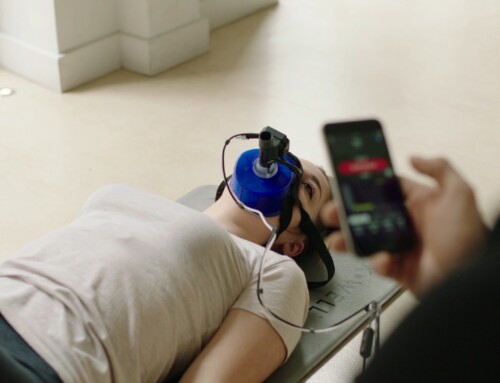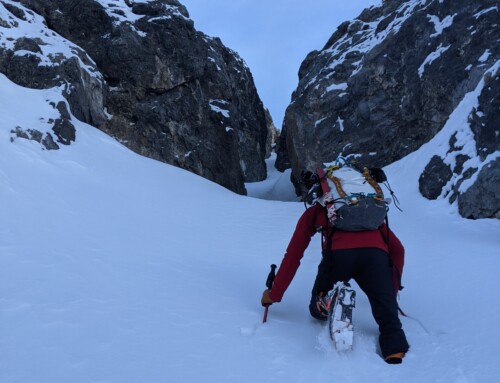Author: Adam Goulet, DC, CCSP, CSCS
Why is it that so many runners and athletes have chronic sacroiliac joint dysfunction? Well maybe we should back up just a second and converse about what sacroiliac dysfunction is. If you have ever noticed that your hip or low back feel “tight” or “twisted” when you’re running you’re likely to be experiencing this dysfunction. Some other signs and symptoms of this problem may be tightness with a pulling sensation in your medial (inner) quadriceps or your hamstrings, and sometimes on one side of your low back. Usually as you run or your activity progresses in duration or intensity you may notice the pain or discomfort getting worse to the point of muscle strain.
So what’s the deal? What’s going on here? First we have to understand anatomy at a level deeper then the “leg bone is connected to the hipbone”. Your pelvis, that thing that connects your spine to your legs, is made up of three distinct bones. The sacrum which is the lowest portion of your back/spine, your ilium, the big wing like bone that you probably think of as your hip, and the pubis, which is the bone part of your pelvis that is most in front. So the sacroiliac joint (SI joint) is the place where your sacrum and your ilium connect, and it is an obliquely angled joint that allows for your hips to swing while you are running or walking. Now the interesting point about this specific joint is that it is not a traditional moving joint. The lower half of the SI joint moves in the same method as your elbow of shoulder, two smooth surfaces that are liberated slide past each other like a well oiled machine; however the upper part of this joint is known as a fibrous joint. What you need to know about the fibrous portion of this joint is simply that it doesn’t move as freely as the lower synovial portion of the joint. Here in lies the problem, you have one joint trying to swing your hips where half of it is trying to move and the other half is trying not to move. In short, this can lead to a condition where the joint gets “stuck”.
But wait you say, how did it get stuck? Well in the most basic sense it’s your butt’s fault. In the most typical situation this can occur from sitting for long periods of time, whether that is at work or in a car. As you sit, your gluteal (butt) muscles are being stretched, as the stretch is sustained the muscles begin to be inhibited, meaning they start to get lazy and not want to work. Now this is the important part because it is the gluteal muscles that are supposed to be moving your SI joint and preventing it from getting stuck (there’s a little chicken and the egg here, but for simplicity I’m saying it’s the butt’s fault). The end result is that as you have been sitting and inhibiting your gluteal muscles your SI joint has also been shifting too. This is something you can actually see if you were to sit with your leg straight out in front of you, perhaps seeing one leg is longer then the other; that’s the SI dysfunction, the shift in the joint shortening one leg.
What was supposed to happen was that your SI joint would shift within it’s normal range of motion and your gluteal muscles would pull it back where it needs to be so that your leg muscles can fire, flex and propel you forward on your run. When you’re suffering from a dysfunctional SI joint what is likely happening is that your SI joint has shifted but your gluteal muscles are inhibited, this means that they can’t fire and bring the SI joint back to where it’s supposed to be, and your leg and back muscles can’t fire efficiently, thus you start feeling pain or tightness in your back and legs.
So the part you really want to know, what can you do about it? The simplest thing you can do is sit less. However this may not be enough. Essentially you need to be able to get your gluteal muscles to fire correctly before you start to run. This should take care of the problem in most cases. There are a variety of activation drills, and corrective exercises that will help prevent this dysfunction from ruining your runs. Once you have found what works for you it’s a good idea to start doing these drills before each run to make sure that your butt isn’t going to cause you problems.
Simple Drills:
Glute bridges – Lie face-up on the floor with your knees bent and your feet flat on the floor. Raise your hips so your body forms as straight line from your shoulders to your knees. Pause in the up position, then lower your body back to the starting position. While performing the bridge pay special attention that you are engaging your abdomen muscle, and breathing through your belly. 10-20 reps
Side leg lifts – Start on your side, with one leg on top of the other. Take one hand and press your pelvis forward to make sure it does not rotate back during exercise. Keep your top leg straight and lift it UP and BACK, using your glutes to lift the leg. Go slow and controlled up and down. 10-20 reps
Standing leg lifts – Much like the side leg lift, however you start standing with both feet planted firmly on the ground next to each other. Focus on engaging your abs and breathing with your belly. Take one leg and move it BACK using your glutes to extend the leg from the hip. You should be able to take your hand and poke the top of your glutes to feel them flex or contract throughout the whole muscle. 10-20 reps
Fire Hydrants – Start on hands and knees, with hands directly under your shoulders and kneed directly under your hips. Focus on keeping your knee bent while you lift your leg as high as you can (like a dog urinating on a fire hydrant). Make sure you are tightening, engaging your core while you perform this. Do the same leg throughout exercise before switching to the opposite leg. 10-20 reps



